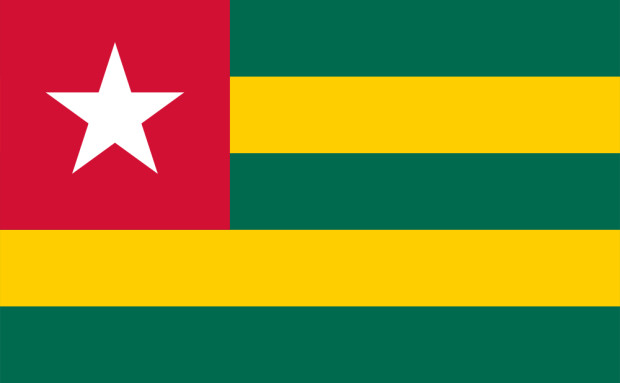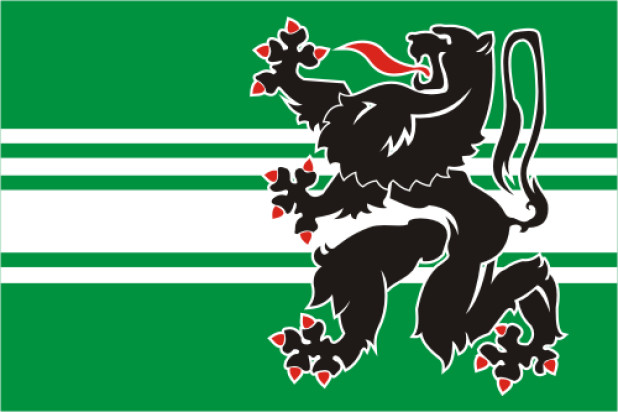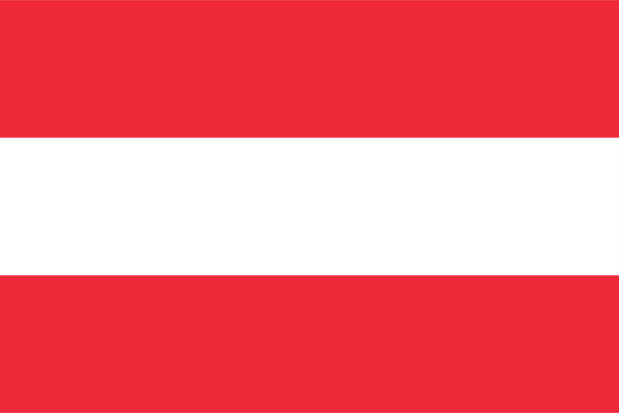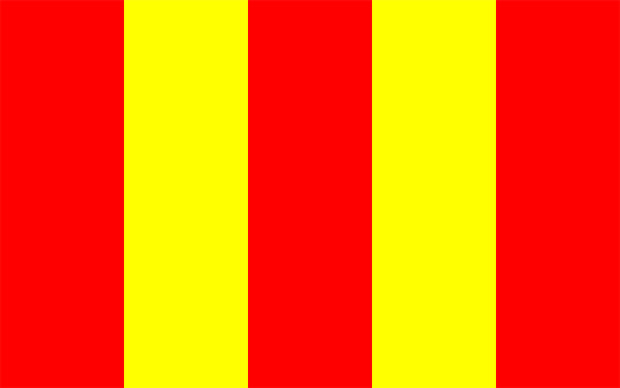Flagga för Filippinerna
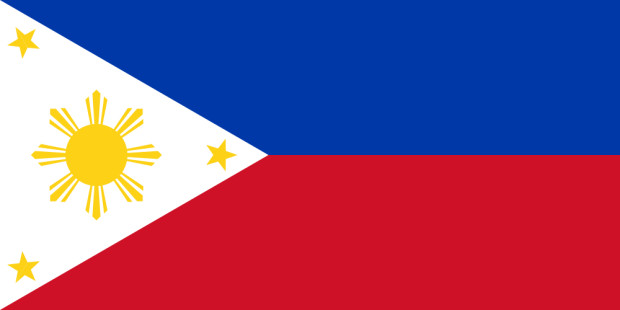
Lyssna på hymnen
Bakgrundskunskap
The national flag of the Philippines on 12 Introduced in June 1898, but in the course of time is repeatedly changed in the shade. It was originally designed by Emilio Aguinaldo. The flag of the Philippines shall be flown at peace with the blue box to the top, while in times of war the red field on top.
Structure of the flag
The national flag consists of two horizontal stripes of equal width in the colors of royal blue and scarlet, which are covered by a white equilateral triangle at the leech. The center of the triangle holds a golden sun, which is surrounded by eight principal rays. Each beam consists of three individual rays again. At each corner of the triangle, also a five-pointed gold star is placed. Each star is designed so that one of the prongs on the top right corner shows where it is located.
The sides of the flag have a length to width ratio of 2:1. All three sides of the white triangle correspond in their dimensions each of the width of the flag.
Symbolism
According to official sources, the white triangle stands for equality and fraternity, the blue field for peace, truth and justice, and the red field for patriotism and valor. The eight-rayed sun stands for the freedom and the eight provinces in which erupted in 1896, the Philippine revolution against the Spanish colonial power, (Batangas, Bulacan, Cavite, Laguna, Manila, Nueva Ecija, Pampanga and Tarlac), and for this time martial law was declared. The three stars symbolize the main geographical areas of Luzon, Mindanao and the Visayas island group.
The symbolism of the flag was given in 1898 with the proclamation of Philippine Independence differs, however, from the current official interpretation. Then played the white triangle on the emblem of the Katipunan, the secret organization that rebelled in the underground against the Spanish rule. It is said that the colors of the flag were based. To the flag of the United States as an expression of gratitude for U.S. support in the fight against the Spaniards during the Philippine Revolution According to another interpretation is one of the three stars stand alone for the island of Panay and do not represent the entire Visayas.
Current Design
The current design of the Philippine national flag was designed by Emilio Aguinaldo, a general of the Philippine Revolution, when this in late 1897, in exile in Hong Kong. The first flag was sewn by Doña Marcela Marino de Agoncillo, which she made with the help of her daughter Lorenza and with the support of Doña Delfina Herbosa de Natividad, a niece of the Reformation leader Jose Rizal.
The flag was, however, only during the declaration of Philippine independence on 12 June 1898 in Kawit for the first time formally unfolds. According to an article in The Manila Times by Augusto de Viana, a respected historian of the National History Institute, can be found in historical textbooks and commemorative rites mentions showing that the flag on the 28th for the first time May was raised in 1898 at the Battle of Alapan, a district of Imus, Cavite. This is also cited in the Presidential Proclamation No. 374, on the 6th of President Diosdado Macapagal March was published 1965th The article goes on to say that the historical records indicate, the flag was first used in Cavite City, when General Aguinaldo unrolled during the first battles in the Spanish-American War.
Två lika horisontella ränder (blå, röd); liksidig vit triangel på sidan av flaggstången; i dess mitt en gul sol med åtta strålar, varje stråle har tre mindre strålar, och tre mindre gula femuddiga stjärnor i triangelns hörn.
Betydelse
Den vita triangeln symboliserar fred och renhet. De åtta solstrålarna symboliserar de åtta provinserna på Filippinerna, som gjorde uppror mot de spanska kolonialisterna. De tre stjärnorna representerar de tre territorierna Luzon, Mindanao och Visayas. Det blå bandet symboliserar patriotism. Flaggans röda band symboliserar folkets mod. När landet är i krig flyttas det röda bandet uppåt som en symbol för tapperhet och mod.
Anthem
Det är vad ChatGPT vet om flaggan för Filippinerna.
-
Filippinernas nationalflagga, även känd som "Lupang Hinirang", symboliserar landets självständighet. Den består av tre horisontella ränder i blått, rött och gult, som representerar färgerna i den gamla filippinska flaggan. Den vita stjärnan i mitten representerar landets provinser och de tre stjärnorna nedanför symboliserar de tre stora öarna Luzon, Visayas och Mindanao.
-
Filippinernas nationalflagga introducerades 1898 under det filippinska självständighetskriget. Den består av tre jämnt fördelade ränder i blått, rött och gult samt en vit triangel med en åttauddig stjärna i mitten. Den blå randen symboliserar frihet, den röda randen symboliserar mod och den gula randen symboliserar välstånd. Den åttauddiga stjärnan representerar de åtta regionerna i Filippinerna.
-
Filippinernas flagga är en färgglad horisontell rand med tre lika stora horisontella ränder. Den övre randen är blå, den mellersta vit och den nedre röd. I mitten av flaggan finns en åttauddig vit stjärna omgiven av tre femuddiga guldstjärnor. Den blå randen står för frihet, den vita för renhet och den röda för mod och tapperhet. Den vita åttauddiga stjärnan symboliserar de åtta provinser som enades i revolutionen mot det spanska kolonialväldet 1892.
Upptäck något nytt
Slumpmässiga flaggor från vår stora flaggdatabas. Låt oss överraska dig.



